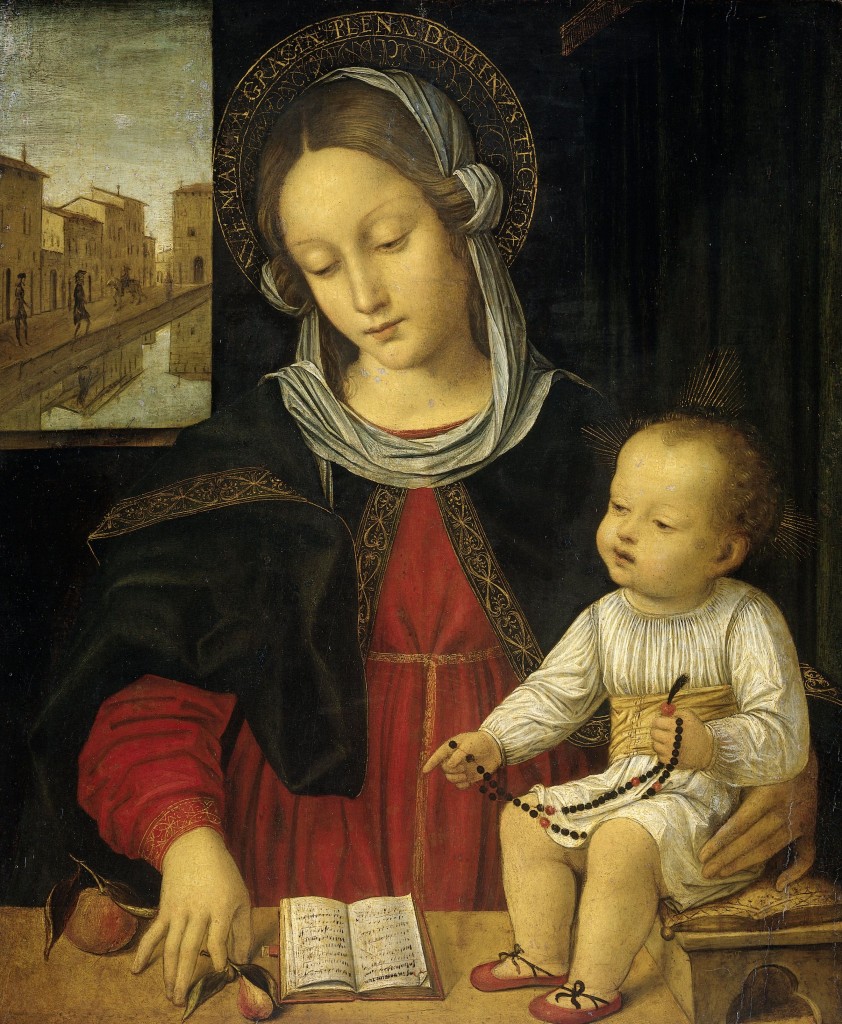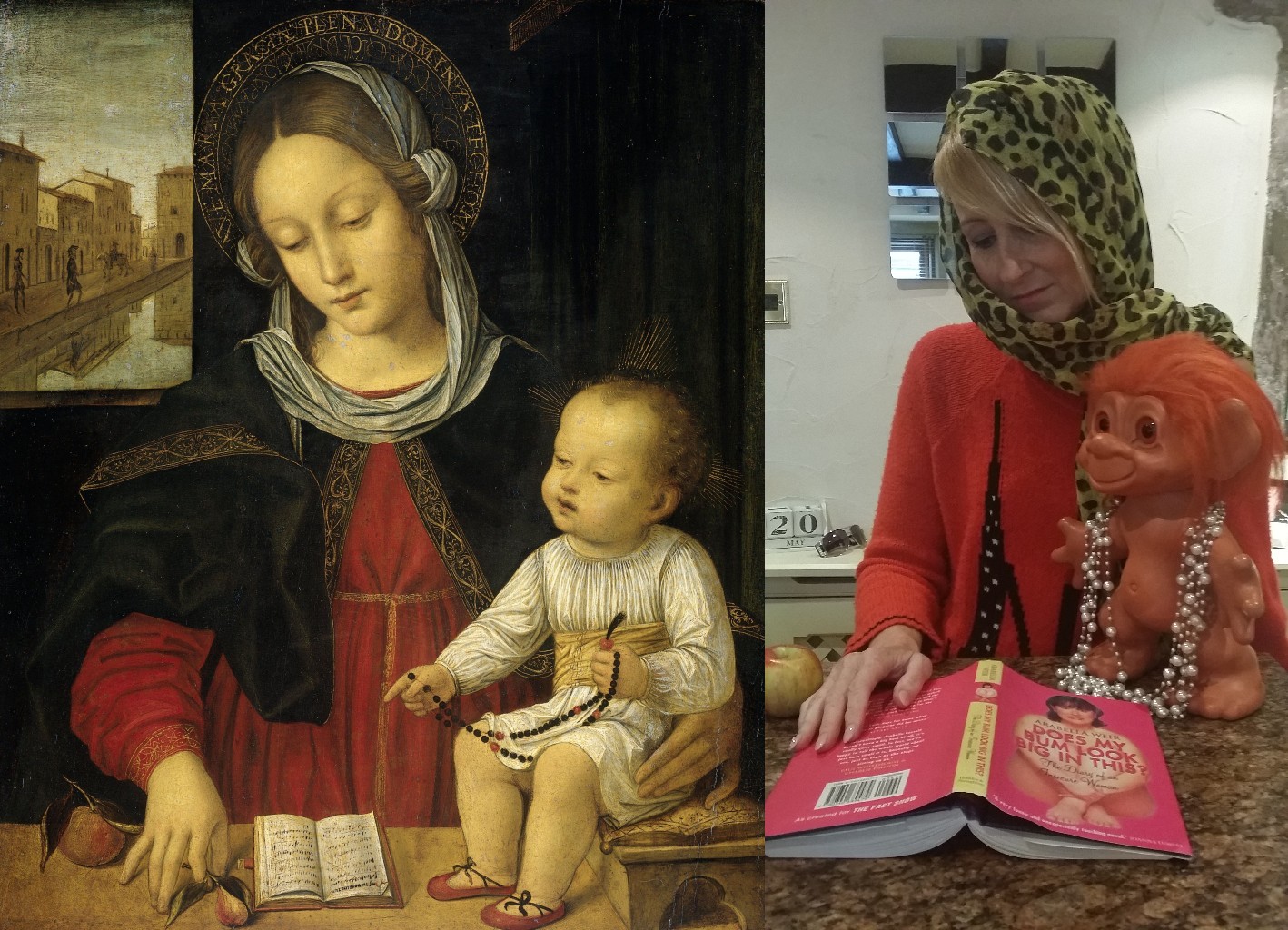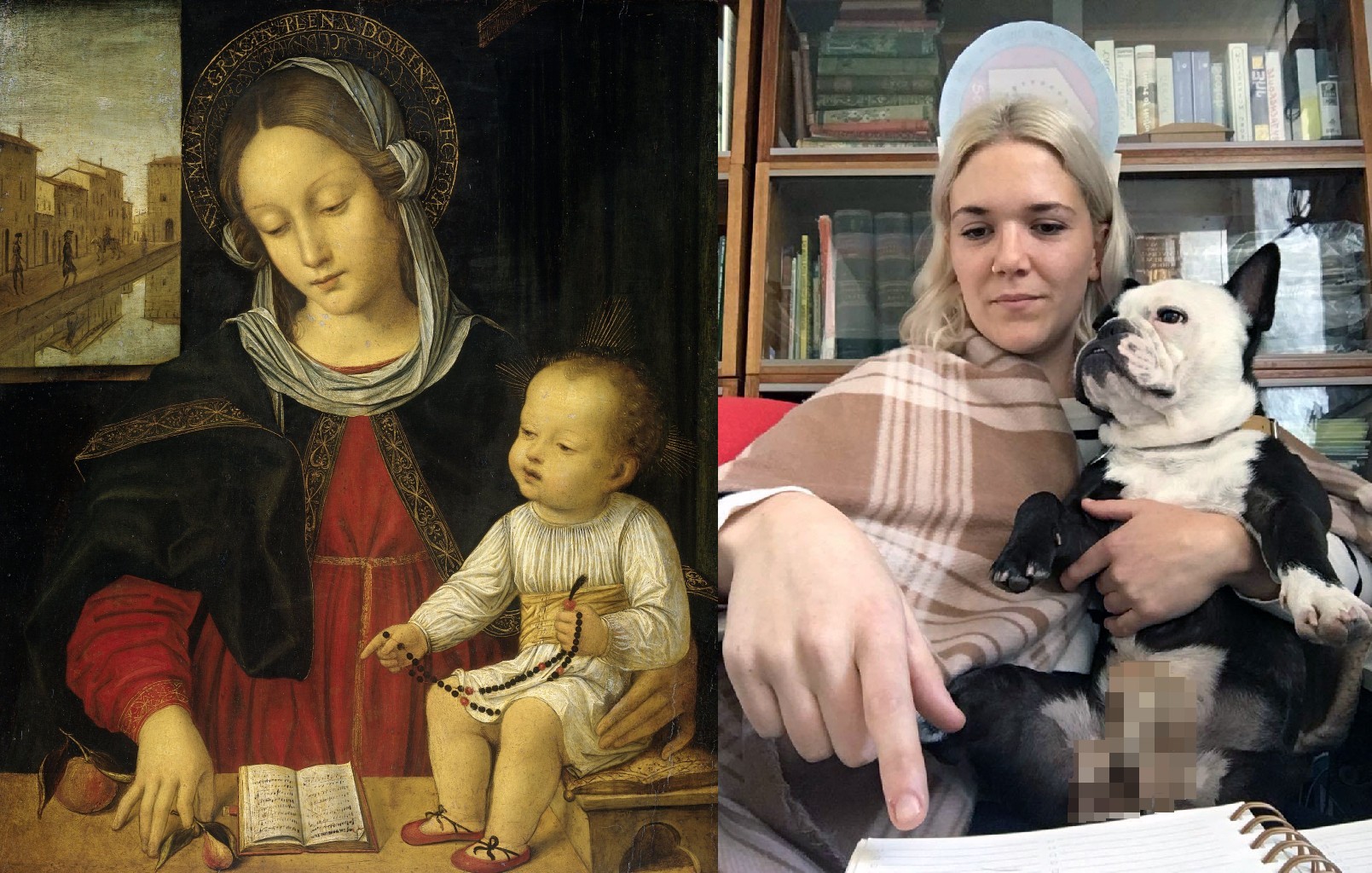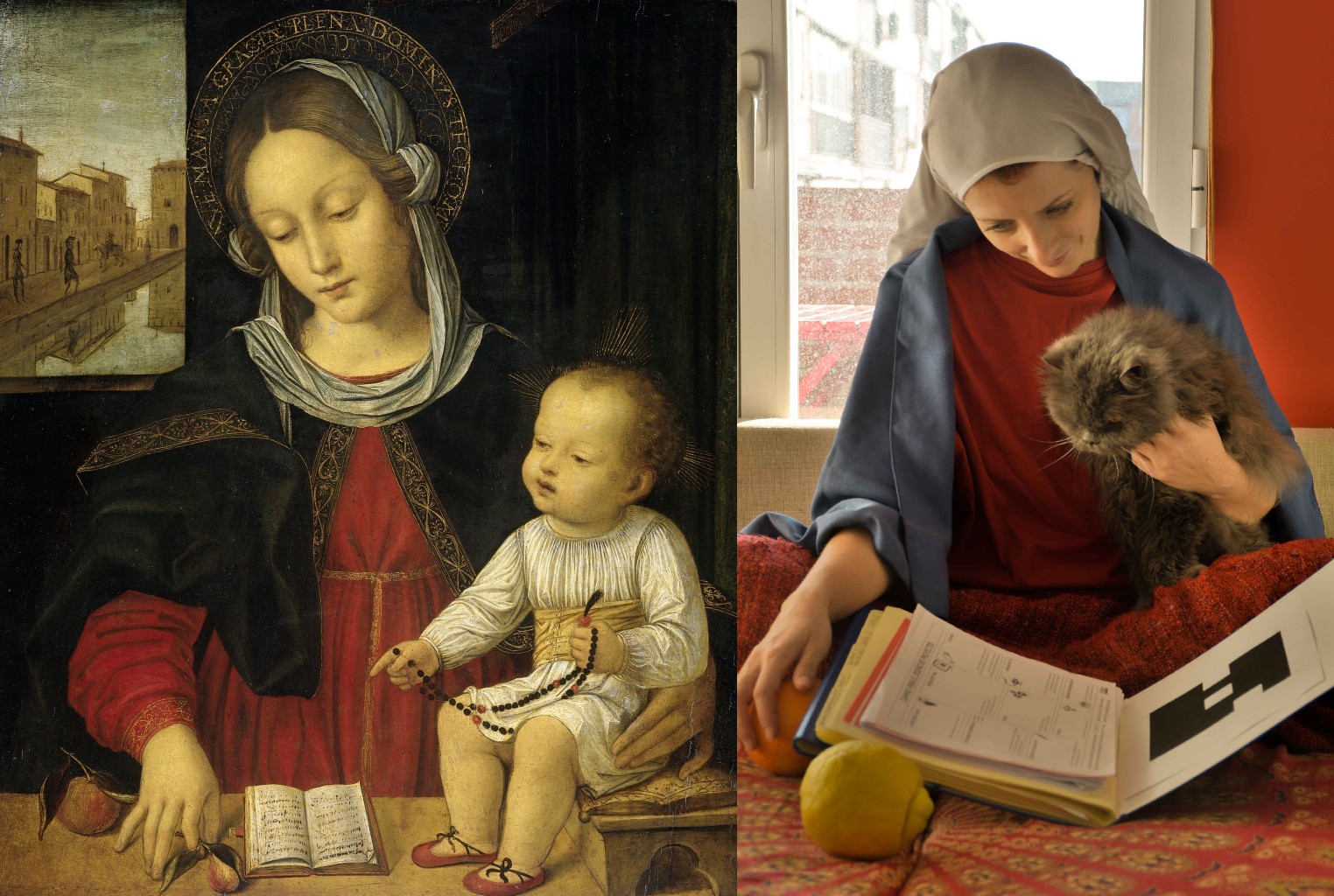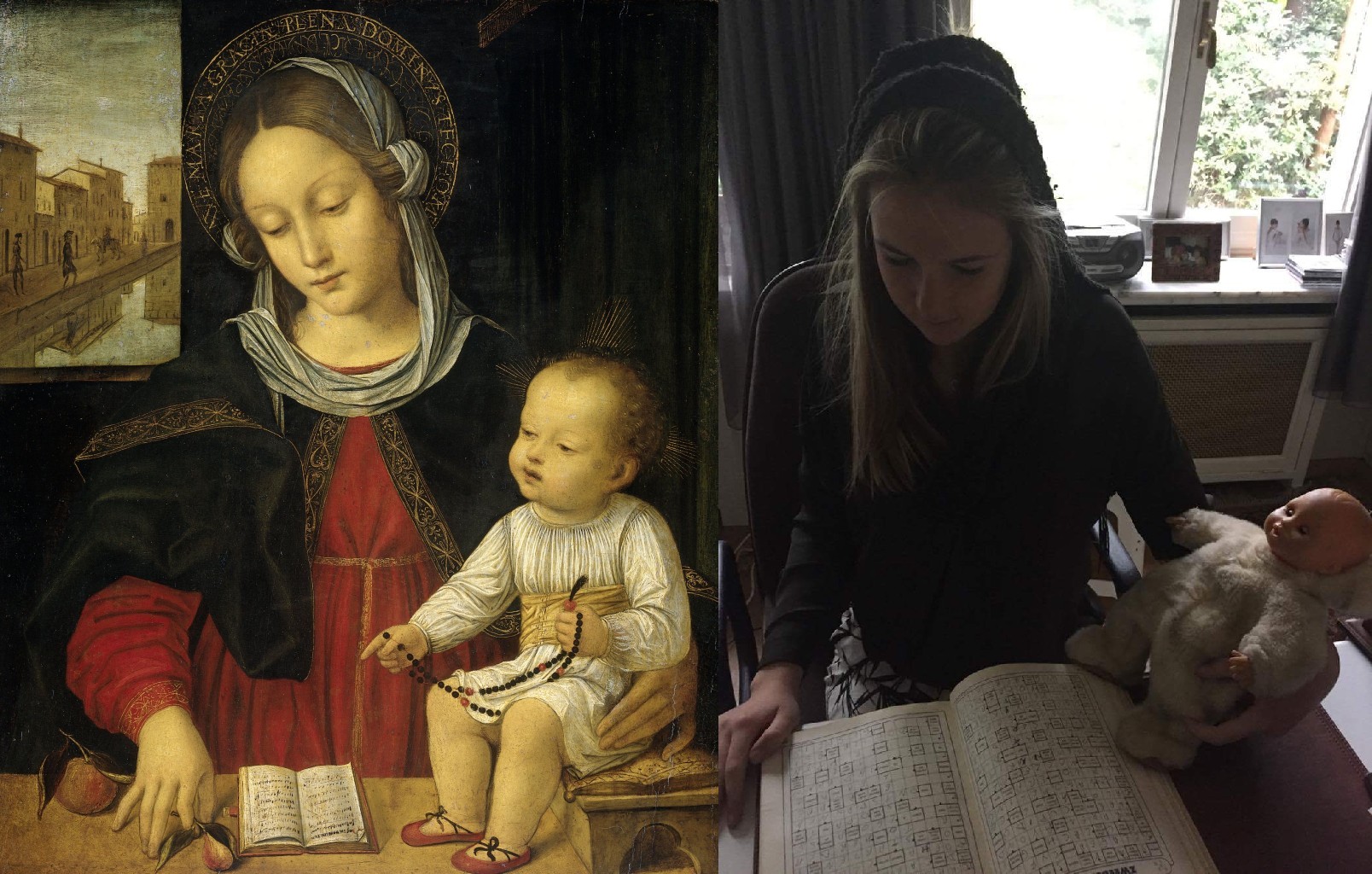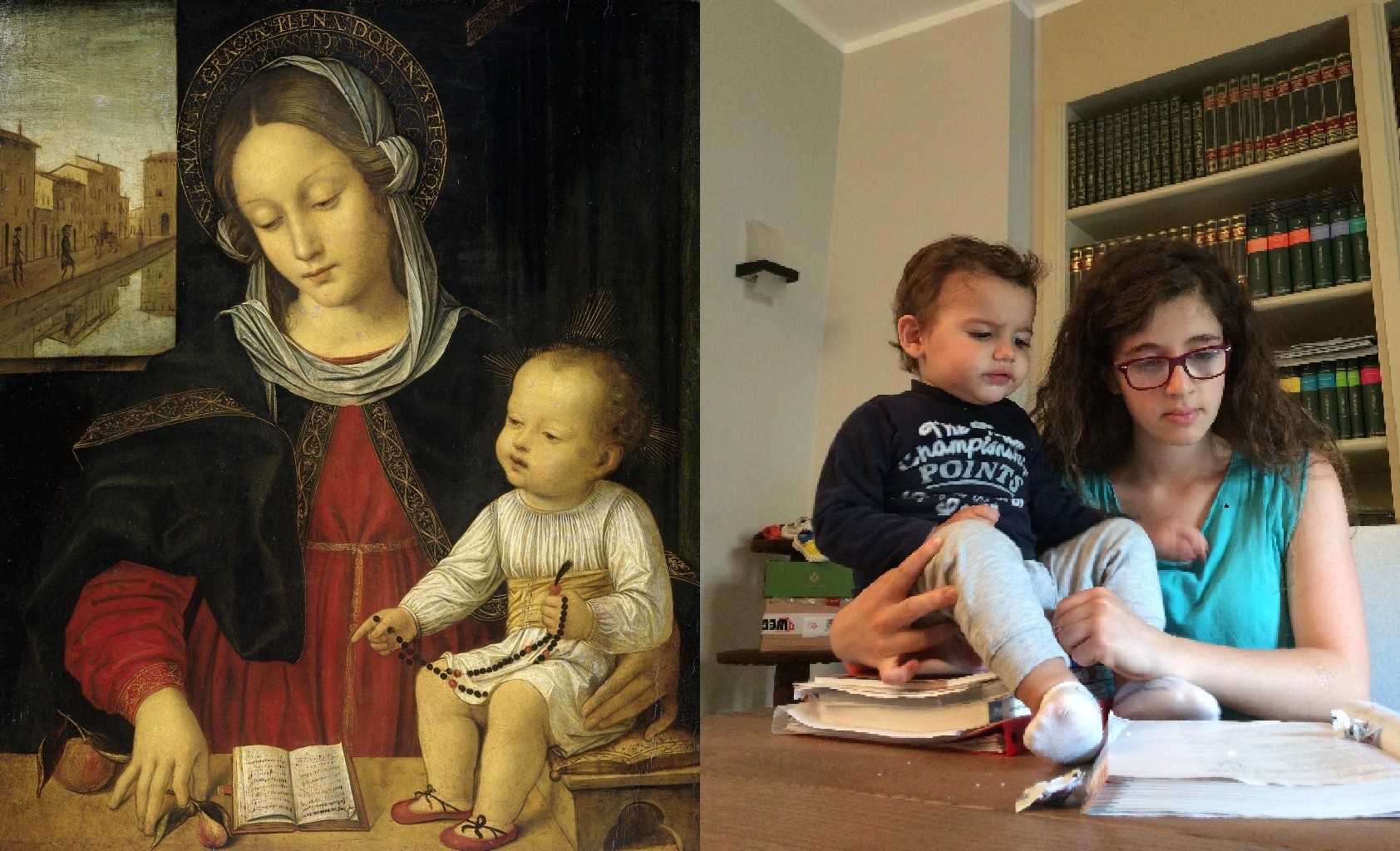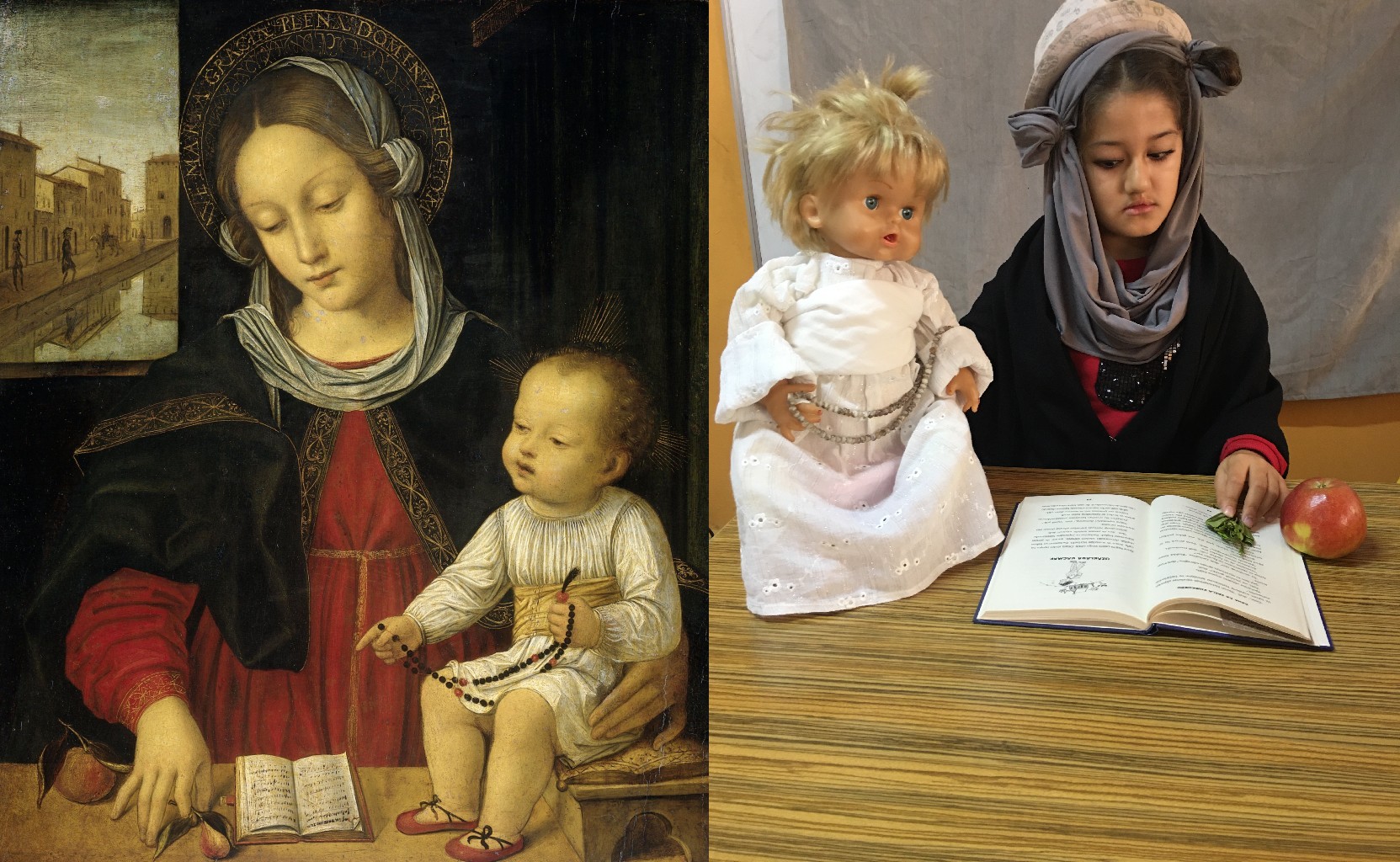By: Ambrogio Borgognone (1465-1525)
Created: 1500-1523, Collection: Rijksmuseum Amsterdam, Amsterdam, Netherlands Rights: Public Domain
Pay attention to the details and symbols in this painting: the apples, the book, the rosary. Feel free to reinterpret these symbols in a contemporary way.
No image permeates Christian art as the image of the Madonna and Child. Very often these paintings are highly charged with symbols and religious references. This is also the case with this painting.
Borgognone, a contemporary to Leonardo da Vinci, paints Mary and the Christ Child in front of a window overlooking a canal in a city. That places the scene in a contemporary setting, which is underscored by the contemporary cloths of Mary and the Christ Child.
The child sits on a wooden bench and holds a string of beads in his hands. This is a reference to the Rosary and the Passion of Christ Mary looks at an open book and some fruits, apparently an apple and a fig.
When presented in the context of Mary and Child paintings, apples and figs are symbols for the redemption, brought to mankind by the sacrifice of Christ. But when these fruits are shown in the context of the Fall of Man, they are the “Forbidden Fruit” from the “Tree of Life”, symbols for the “Original Sin”. The book refers to the prophecies about the arrival of the Messiah, redeeming mankind from the “Original Sin”.
The essence of the catholic faith is hence shown in a simple scene, showing a mother and her child.
